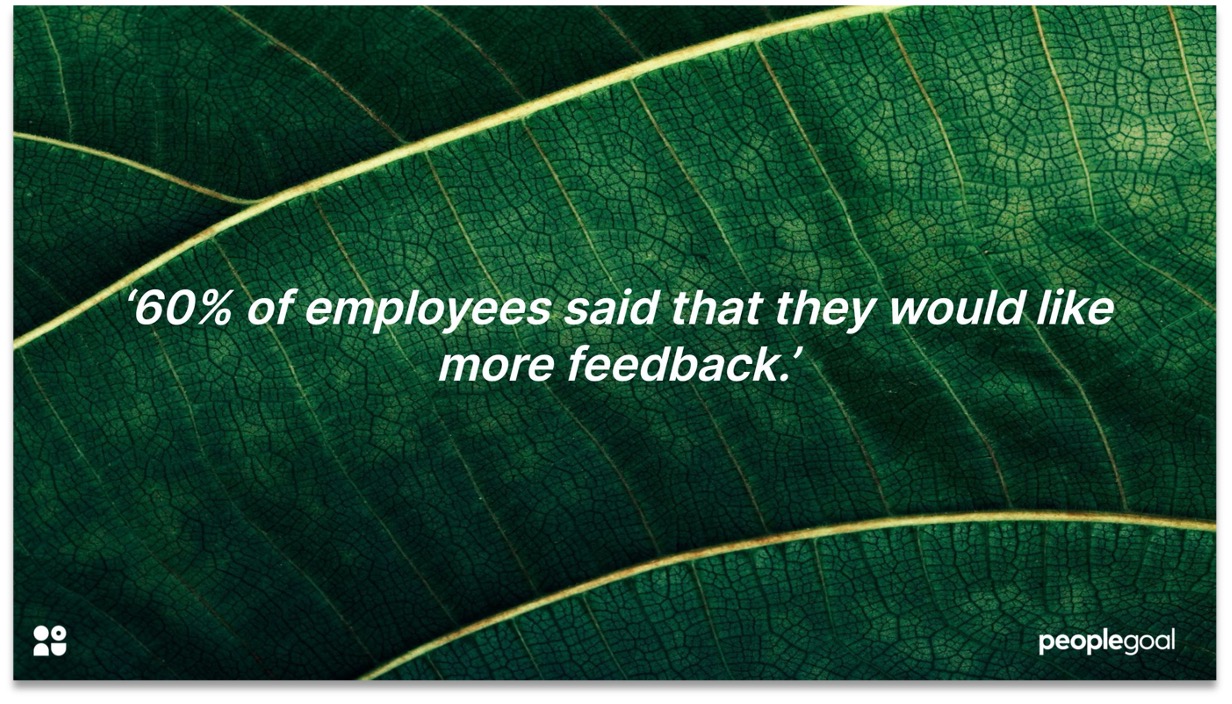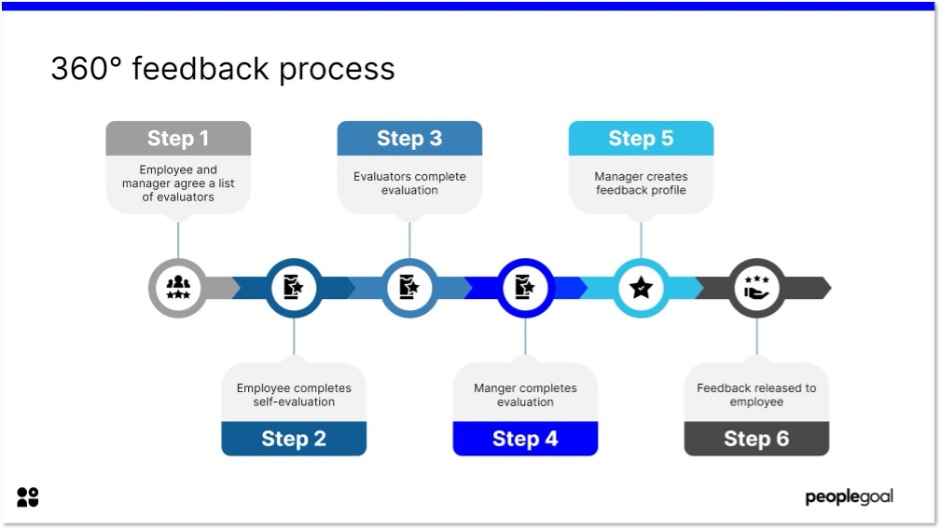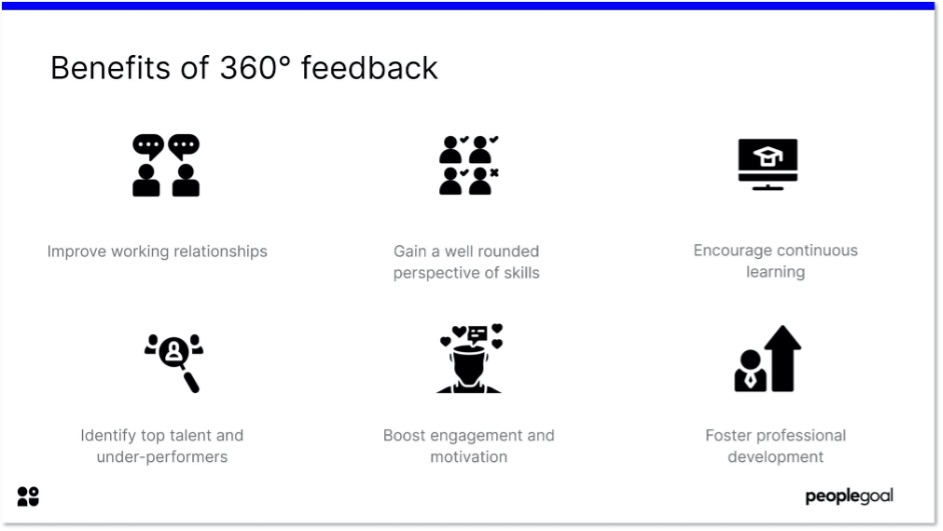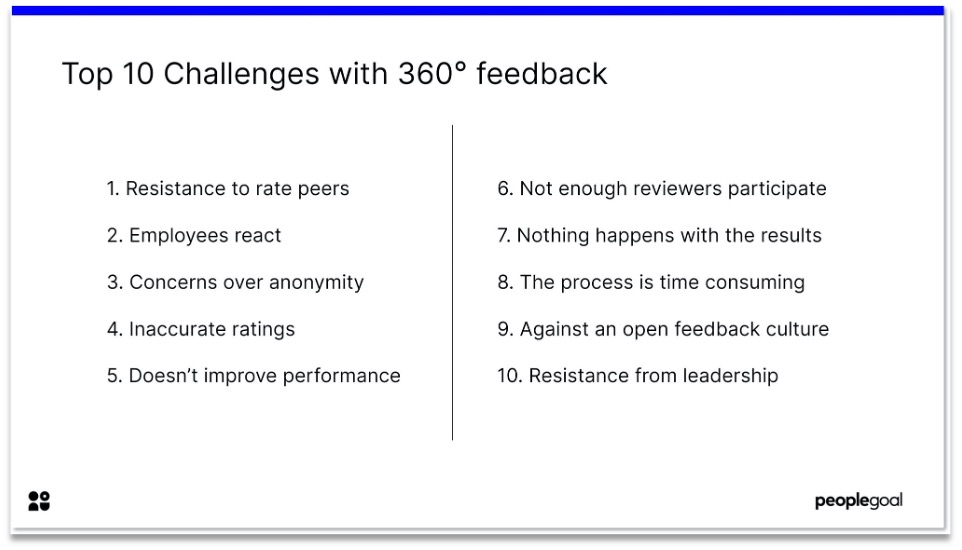Employees want regular, real-time feedback on their performance. According to research from PwC, 60% of employees said that they would like more feedback. And that number increases to 72% for employees under the age of 30. However, feedback isn’t always given or received well. In organizations with hierarchical, top-down structures, feedback is often one-sided – only given from manager to direct report. 360 feedback is an attempt to democratize the feedback cycle by providing both positive and constructive feedback to employees from a well-rounded perspective.
360 feedback surveys are a powerful tool and when used correctly, encourage employee growth. However, there is a lot to get right to deliver a successful 360 review. In this blog, we are going to look at the top challenges HR leaders face when implementing a 360 feedback cycle and provide our tried and tested solutions to help you succeed. If you’re new to this process, reviewing 360 Feedback Examples can help you understand what effective feedback looks like and how to structure it for impact.

What is 360 degree feedback?
Put simply, 360 feedback (also known as multi-rater feedback) is a feedback system where employees are rated by different members of their organization, across different levels of seniority, on certain competencies or behaviors. Feedback is gathered from an employee’s colleagues, direct reports, manager(s) and sometimes even their clients. The goal is to gain a well-rounded view of employee performance by revealing areas of strength and any weaknesses from different perspectives. The feedback should be used for learning and development purposes.

360 feedback is a key part of continuous performance management, which is the process of providing regular, ongoing feedback to employees throughout the year. It aims to replace the traditional performance management model, which is over-reliant on the annual performance review. Continuous performance management aims to create an environment where feedback is given regularly, and teams can perform to their maximum potential.
👉 Check out our Essential Guide to 360 Feedback to learn more
Benefits of 360 feedback

- Improve working relationships
- Gain a well rounded perspective of skills
- Encourage continuous learning
- Identify top talent and under-performers
- Boost engagement and motivation
- Foster professional development
Top 10 Challenges with 360 feedback (and solutions!)

1. Resistance to rate peers
Feedback collected during a 360 feedback cycle will not be valuable to employees or the organization if reviewers aren’t prepared to provide candid feedback. Your people may be reluctant to give honest back if they haven’t had the right training or experience. If your employees are not comfortable giving feedback, especially if it is negative, it could also cause them stress.
☑️ Solution: You must prepare reviewers to provide feedback. To top 10 challenges with 360 feedback reduce resistance to participate in the process, provide resources and training to reviewers to help them provide accurate ratings and useful, constructive comments. It is also important to select the right questions and rating scales, focus on attitude and soft skills rather than performance.
2. Employees reacting negatively to feedback
Receiving feedback, whether positive or constructive, can be a stressful experience. This is normal and to be expected. No one likes to hear negative feedback, so you must make sure feedback is provided in a correct and constructive way – otherwise it could cause strain between your employees. In addition, reviewees are likely to be concerned about how the feedback will be used and its impact on future pay and promotion decisions.
☑️ Solution: The first step to success is clearly defining the purpose of 360 feedback and making sure people understand why you are doing it. Communicate the purpose of 360 feedback to all employees, the benefits to stakeholders and how the results will be used. Prepare individuals to receive feedback, and provide feedback training to reviewers. Encourage reviewers to leave constructive comments.
3. Concerns over anonymity
Peer reviewers often fear sharing uncensored peer feedback with their colleagues. They may well have concerns over whether their feedback will be anonymous, and be worried that the reviewee will find out what they wrote.
☑️ Solution: To ensure success, all employees need to feel comfortable with the 360 assessments. Do not be concerned about over-communication, the more the better! Explain how confidentiality and anonymity will be maintained. Educate all employees about the process and provide proper training prior to execution.
4. Inaccurate ratings
Achieving a feedback culture can be tricky. The first round of 360 feedback is not always objective because evaluators are often very lenient towards their peers. If this happens, the rating distribution will be skewed and the results may be inaccurate. In addition, like any other appraisal processes there are natural biases which can affect the validity of the ratings.
☑️ Solution: To resolve this, make it clear to your employees what you want to achieve. Explain how using 360 will help them improve their leadership skills and performance. Or perhaps the aim is to improve collaboration and teamwork. If the benefits are clear, employees will want to participate properly.
5. Doesn’t improve performance
Whilst feedback can be useful for performance, 360 feedback assessments are most effective when used for growth and development purposes. It should give the employee an idea of how their colleagues perceive them, rather than judge them on specific performance metrics which usually require input from their manager. Peers often will not have the necessary experience to rate their colleagues on their performance.
☑️ Solution: Always link 360° survey questions to development and not performance. Cover skills that the employee can improve on in line with company values and desired behaviors. 360 evaluations can be tied to performance appraisals, but it should not be used to assess employees on job related metrics.
6. Not enough reviewers participate
One of the key components of 360° feedback is that it takes multiple different perspectives and viewpoints. Particularly for smaller organizations this may cause some problems, as it will be more difficult to gather a full 360° view.
☑️ Solution: To combat this, ensure you use 360 feedback software that supports the required number of evaluators. For optimal results, there should be at least 5 reviewers from different parts of the organization.
7. Nothing happens with the results
One of the key criticisms of 360° feedback is that it doesn’t actually achieve anything. The questions can cover many different factors and competencies, and a lot of data will be collected. It is then hard to draw conclusions from the data and take action on the results.
☑️ Solution: In your planning stages, ensure you have clearly defined the purpose of 360 feedback for your organization. Consider how it will help the organization, how the results will be used and if they will contribute to performance evaluation, leadership development or succession planning. Once the process is complete, ensure the results are tied into employee development initiatives. Encourage managers to create clear action plans for their direct reports based on the feedback.
8. The process is time consuming
Running 360 reviews takes up a significant amount of time, both for human resources and employees. It takes time to plan, design and implement the process from an HR perspective. It also takes employees time to fill out the surveys, especially if they are asked to give feedback for several of their colleagues. Supervisors and the HR team then need to sift through all the data and use it meaningfully.
☑️ Solution: The best way to create a streamlined process is to use a feedback software vendor. Better still, find a software that can be tailored to your unique requirements to speed up the process. Automate the 360 workflows using relationships to save time for HR teams.
9. Against an open feedback culture
More and more companies are seeing the benefits of having an open feedback culture, where feedback is given freely between employees. An anonymous approach to 360 feedback is completely at odds with this idea. If you want your culture to be feedback first, and have employees openly deliver feedback to one another you need a system that supports this.
☑️ Solution: Make your 360 feedback process transparent. Either allow the employee to choose their peer raters, or get the manager to select them. This way, you will help promote a feedback culture.
Watch our webcast How to Enable a Feedback Culture to learn more 🎬
10. Resistance from leadership
If senior management do not visibly support and champion 360 feedback then there is no reason for anyone else in the company to do so. Leaders that don’t support the initiative send the message that it is not important. Some leaders may want to block the process because they are uncertain of its usefulness. Their concerns can transmit to opposition from their teams
☑️ Solution: Buy-in from leadership is essential to 360 success. It is vital to clearly outline the benefits to both employees and the business in the early stages. Another great idea is to include some of the senior leadership team in your pilot testing groups, this is a great way to get them involved and understand the benefits from day 1.
To sum up
So there you have it, our top 10 challenges to think about when implementing a 360 feedback cycle. Despite these challenges, it is a great development tool to use when trying to generate authentic, honest and balanced feedback. It gives a complete picture of employee performance, and provides vital insights to help them grow and develop. Have a look at our article How to Set Up 360° Feedback to gain a more in-depth understanding of how 360-degree feedback works in PeopleGoal.
Next steps:
- Need help setting up a flexible 360 feedback process? Book a demo with one of our 360 experts today
Ready to 3x Your Teams' Performance?
Use the best performance management software to align goals, track progress, and boost employee engagement.




![A Detailed Guide on Employee 360 Feedback Software [+List of Tools]](https://www.peoplegoal.com/blog/wp-content/uploads/2025/02/Best-360-Feedback-Software_.png)